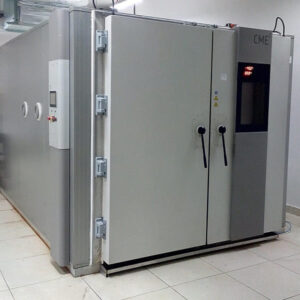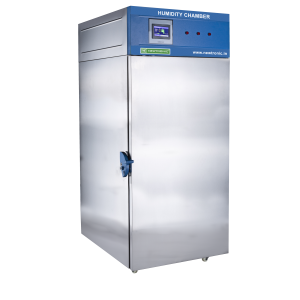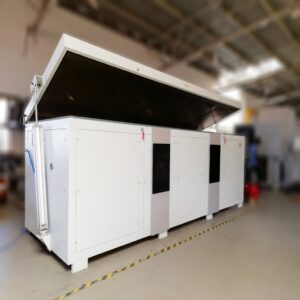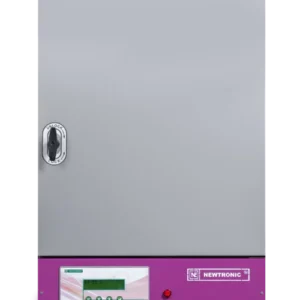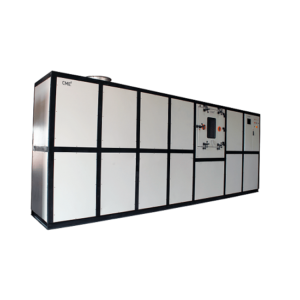Stability Chamber
Environmental Stress Screening (ESS) chambers simulate harsh environments through rapid thermal cycling to assess the failure rate of specimens in a shorter testing period. Our ESS chamber features a ramp rate of 20°C/min and a humidity range of 10% to 98% RH, creating a highly stressful environment for a wide range of testing procedures.
Stability Chamber
Environmental Stress Screening (ESS) chambers simulates stressful environment through rapid thermal cycling to determine the specimen’s failure rate in a shorter testing period. It not only helps manufacturer to develop a better product with least infant mortality rate but also considerably decreases their product development time. CME’s ESS chamber has ramp rate of 20°c/min with humidity range in between 10% to 98% RH forming a highly stressful environment in its test space to conduct wide range of testing procedures. The chamber is widely popular among electronics & electrical industries who relies on our chamber to identify failure risks of their new offerings which are in development stage.
Stability Chamber
Freeze Thaw Chambers are advanced equipment designed to simulate and test environmental conditions for distribution stability studies. They are essential for ensuring product quality during transportation and storage under extreme and fluctuating temperature conditions. These chambers support preformulation development and routine stability studies in accordance with ICH Q1A(R2) guidelines.
Stability Chamber
To determine the ability of the module to withstand the effects of high temperature and humidity followed by sub-zero temperatures. After the fabrication of a high power photovoltaic (PV) module, the most critical aspect is the duration for which the module can produce useful power. Reliability and lifetime of photo-voltaic (PV) modules are key factors to system performance and warranty and thus are extremely important as far as PV business is concerned. Outdoor field testing is an accurate method in estimating module lifetime. However, since PV modules commonly come with twenty five years of warranty, testing modules in field for that long period is not feasible. Thus, due to time constraints, many accelerating aging tests have been derived over the years for testing reliability of PV modules. The accelerated test protocols established by organizations like IEC and UL have been adopted worldwide as official tests to evaluate module quality and reliability standards.
Stability Chamber
Newtronic’s humidity stability chambers are designed to meet stability testing requirements in industries such as cosmetics, food, beverages, and others. The chambers fully comply with ICH conditions for real-time, intermediate, and accelerated testing. Additionally, they are compatible with advanced software supporting 21 CFR Part 11, ensuring strict data management compliance. The Newtronic Lifecare Chamber is an ideal device for creating a controlled environment with high precision in temperature and humidity. It is widely used in industries such as pharmaceuticals, food, and electronics.
Stability Chamber
Assessing the performance and shelf life of explosive-filled components is crucial in the development of defence products. Tests such as tropical exposure and intensified standard alternating trials (ISAT) are standard for evaluating performance, and our customized Climatic Chamber is designed to facilitate these tests seamlessly.
Stability Chamber
Laboratory Incubators are designed to meet strict microbiological research and testing standards, providing optimum temperature stability for sample storage.
Stability Chamber
The 1000L Dust Test Chamber simulates dusty environment to validate the reliability and functioning of specimen under extreme environment. Being an ideal option for testing electronics and automotive components, the chamber’s dust composition, dust concentration levels, test duration and dust injections, controlled air velocity to the test space are exclusively designed to comply with the MIL-810F test standard procedure I and procedure II.




